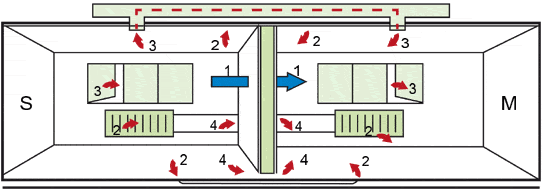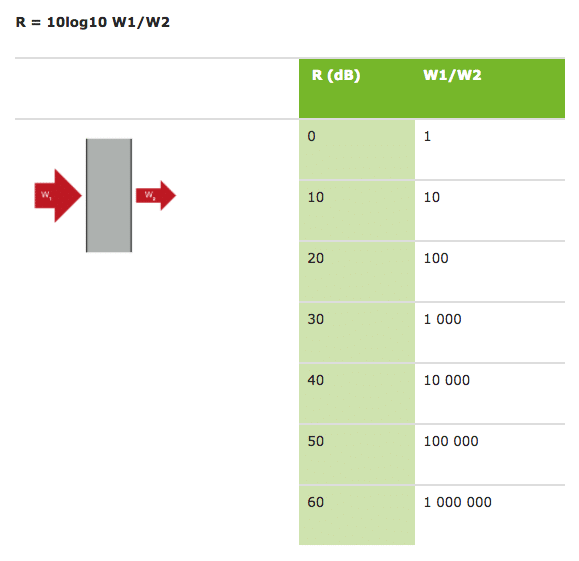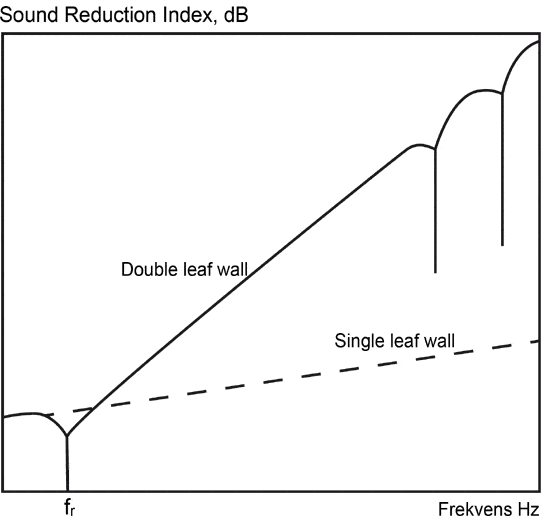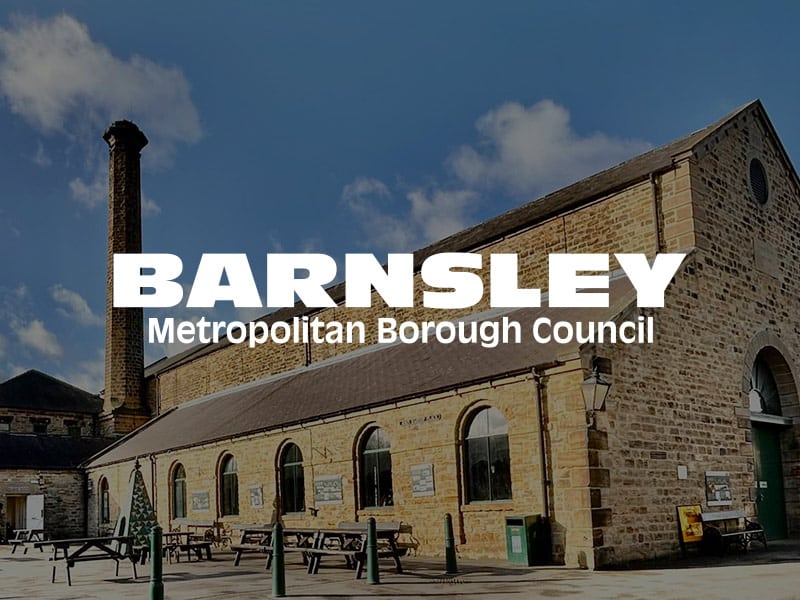Acoustic Consultancy Support through Planning Permission
Sound Testing for Building Regulations Shrewsbury & Shropshire
We provide UKAS-accredited sound insulation testing throughout the Shrewsbury & Shropshire area, providing you with reports for your building control officer with a quick and reliable turnaround.
Sound Testing for Building Regulations Shrewsbury & Shropshire
NOVA Acoustics Ltd provides sound and acoustic testing across Shrewsbury & Shropshire. Our local knowledge and ability to respond quickly to your project requirements across Shrewsbury & Shropshire is unrivalled and comes at the most competitive price. We specialise in sound testing and sound insulation design advice so give us a call to discuss your project or review our sound insulation design advice pages here to get started. Our specialist knowledge of Part E of the Building Regulations and the unique needs of our local clients means that we are still Shropshire’s most popular choice for sound testing.
Our efficient sound insulation testing protocols fully comply with Part E of the Building Regulations for England and Wales. Our years of experience mean that your project will be expertly dealt with from start to finish by our expert team of acoustic consultants. You can rest assured that you are in safe hands as we are UKAS Accredited Testing Laboratory No. 8568 for Sound Testing.
FAQs
We strongly advise that you get in touch with us at the earliest possible stage for your development to have the best possible chance of passing its sound test. However, there are certain minimum requirements in the progress of the development that will impact our ability to perform sound insulation testing and the likelihood of a development passing. Some general requirements for improving the chances of passing sound testing include:
Windows & external doors must be installed, glazed and closed
Ventilation systems should be installed and closed
Internal doors should be hung
Walls, floors and ceilings must be completed
Skirting boards, electrical sockets and light switches should be fitted
To test Impact sound transmission, there must be no cosmetic flooring fitted
Rooms in which testing is to be carried out should be empty and tidy
No trades should be working in the dwelling during the test
Access to the properties on both sides of the separating partition is required
There must be no noisy operations around the test properties during testing
240v (50Hz) mains power is required within the dwellings
Sound testing costs will ultimately depend on the overall size of the development. We pride ourselves on our expert and acclaimed service, which includes honesty and transparency with all costs associated with sound insulation testing.
This means that sound testing is broken down into two simple areas:
A. One-off ‘site fee’ which covers costs for expert engineers, equipment and reporting
B. A remaining fee based on the number of sound insulation tests required
We also provide impressive savings for bulk testing of multiple developments, as well as discounts for returning clients.
Our unrivalled service includes free, expert advice for helping properties achieve required levels of sound attenuation.
We also charge a site fee only for developments that require re-testing. Simply the use the contact form on this page, or call our offices, to chat about your specific sound insulation testing requirements with our friendly and knowledgeable expert acoustic consultants.
Sound is transmitted through most walls and floors by setting the entire structure into vibration. This vibration generates new sound waves of reduced intensity on the other side.
The passage of sound into one room of a building from a source located in another room or outside the building is termed ”sound transmission”.
Transmission loss or Sound Reduction Index, R dB, is a measure of the effectiveness of a wall, floor, door or other barrier in restricting the passage of sound. The transmission loss varies with frequency and the loss is usually greater at higher frequencies. The unit of measure of sound transmission loss is the decibel (dB). The higher the transmission loss of a wall, the better it functions as a barrier to the passage of unwanted noise.
There are two types of sound insulation in buildings: airborne and impact. Airborne sound insulation is used when sound produced directly into the air is insulated and it is determined by using the sound reduction index. Impact sound insulation is used for floating floors and it is determined by the sound pressure level in the adjacent room below.
1. Direct sound transmission
2. Flanking transmission
3. Overhearing
4. Leakage
When a sound wave is incidental upon a partition between two spaces, part of it is reflected and part of it is transmitted through the partition.
For single leaf structures, such as a homogenous concrete wall, the transmission follows the mass law, that is, the more massive the structure, the smaller the quantity of transmitted sound. In case of lightweight structures consisting of multiple layers, such as a gypsum wall, the spring-mass law is applicable. If highly absorbent material such as stone wool is used as the spring in a double leaf wall, the sound insulation improves. The wider the cavity, the greater the benefit from stone wool will be. Typically, a 5 – 10 dB increase in R can be achieved with a filled cavity compared to an empty one. The figure below shows a single leaf structure and a double leaf structure with the same total weight.
Calculation of the sound reduction index R is based on test results obtained at different frequencies. The results are plotted against the reference curve between 100 Hz and 3150 Hz at 1/3-octave intervals. If the measurements are performed in situ (in a real building) the values are denoted R’. The standard test procedure is defined in EN ISO 140, where standard methods are given for both laboratory and field measurements.
The difference between laboratory and field values can be a significant number of dB depending on the construction details and workmanship.
If a partition consists of different kinds of elements – for example, a wall with windows and doors which have different sound transmission characteristics – the overall sound reduction index must be calculated.
The sound reduction index for holes and slits is nearly equal to 0 dB. The influence of holes and slits may therefore be important, for instance, at the connections between walls, at doors and windows without sealing strips, and at any necessary openings in partitions. If there is an acoustically absorbing material in the slits, it will give a higher sound reduction index for the slits.
When specifying the acoustic performance of a partition in a more general manner, it can be useful to describe the sound insulation by a single number.
The weighted sound reduction index, Rw , is a rating method given in EN ISO 717-1. This standard fits a standard reference curve to the measured sound reduction index curve
In EN ISO 717-1, a rating method is also given where the Rw value is completed by two C-terms which are applied to two models of the noise spectra for various types of noise. These two terms, Rw + C and Rw + Ctr, also include the frequency range 100 – 3150 Hz but can be extended to 50 – 5000 Hz. As industrial and traffic noise often have high sound levels which are also below 100 Hz, it is recommended that the extended frequency area is used.
The summary value, Rw + C, gives the reduction value in dBA for a spectrum with a level which is equally high in all third-octave bands. This can be used for:
Living activities (talking, music, radio, TV)
Railway traffic at medium and high speed
Highway road traffic travelling at speeds in excess of 80 km/h
Jet aircraft at a short distance
Factories emitting mainly medium and high frequency noise
The summary value Rw + Ctr also gives the reduction value in dBA, spectrum with low-frequency dominance such as:
Urban road traffic
Railway traffic at low speeds
Disco music
Factories emitting mainly low and medium frequency noise
An airborne source sets up vibrations in the surrounding air which spread out and, in turn, set up vibrations in the enclosing walls and floors. An impact source sets up vibrations directly in the element it strikes.
These vibrations spread out over the whole area of the element and into elements connected to it, such as internal walls, the inner leaves of external walls and floors. The vibrations in the elements force the air beside them to vibrate and it is these new airborne vibrations that are heard.
Floors should reduce airborne sound and also, if they are above a dwelling, impact sound. A heavy solid floor depends on its mass to reduce airborne sound and on the soft covering to reduce impact sound at source.
A floating floor contains a layer of highly resilient material which largely isolates the walking surface from the base and this isolation contributes to both airborne and impact insulation.
It is important to choose a suitable material and to make sure that is not bypassed with rigid bridges such as fixings and pipes.
Air paths, including those due to shrinkage, must be avoided; porous materials and gaps at joints in the structure must be sealed.
Resonances must also be avoided; these may occur if some part of the structure (such as dry lining) vibrates strongly at a particular sound frequency (pitch) and transmits more energy at this pitch.
Impact sound insulation is calculated from measurements of the sound pressure level produced by the standardised hammer method. The results are presented as a curve between 50 – 5000 Hz.
When calculating a single-number quantity L n,W or L’n,W the levels for the 16 frequencies are compared to the standard curve in a similar manner to the calculation of the sound reduction index. The only difference is that the deviation between the measured curve and the standard curve is in this case above the standard curve. Ln is measured in the lab whilst L’n is measured in the field. For both Ln and L’n low numerical values mean good impact sound insulation.
Also for impact sound insulation, two spectrum adoption terms Ci,100-2500 and Ci,50-2500are needed in case of a floor with wooden beams. The difference between the results of laboratory and field measurement is caused by the flanking phenomena in a building. In a real building, sound transfers not only through a structure being designed – for example, a floor – but also via connecting structures adjacent to the floor.
Flanking sound (or flanking noise) is sound that transmits between spaces indirectly, going over or around, rather than directly through the main separating element.
This can allow sound to transmit between spaces even though the main separating element itself provides good acoustic insulation.
Approved document E: Resistance to the passage of sound, defines ‘flanking transmission’ as, ‘Sound transmitted between rooms via flanking elements instead of directly through separating elements or along any path other than the direct path’. It defines a ‘flanking element’ as, ‘Any building element that contributes to sound transmission between rooms in a building that is not a separating floor or separating wall’.
A common example of flanking is sound transmitted between two spaces through a floor void (or even a floating screed) that runs under the separating partition, even though the partition provides good acoustic insulation preventing the direct transmission of sound.
Flanking can result from both impact sounds and airborne sounds. Any building element that penetrates or circumnavigates a separating element can result in flanking. This might include:
Windows and doors.
Flanking ceilings, floors and walls which continue past the separating element into the adjoining space.
Voids such as wall cavities, suspended ceilings and raised floors.
Penetrating joists.
Corridors and other circulation spaces.
Ductwork and pipework.
Sockets.
Poor workmanship.
Flanking should be considered early in the design stage of new developments and detailing should eliminate or minimise the inadvertent downgrading of sound insulation. Junctions between elements in particular can offer a potential flanking route if they are not carefully detailed and constructed. Good briefing, supervision and inspection on site can help to ensure that the quality of workmanship remains high so that details are constructed as designed.
Recent Projects
Acoustic Consultancy Services for Barnsley Council alongside Purcell Architects.
Noise Impact Assessment for External Fixed Plant for Retail













